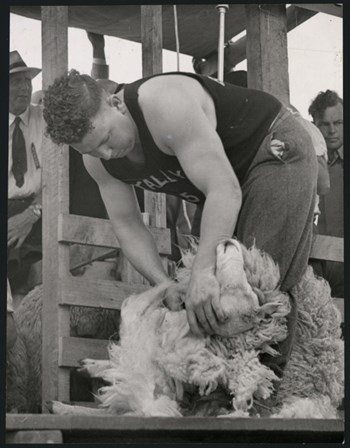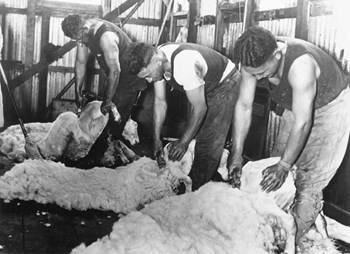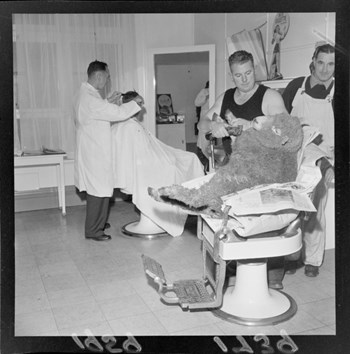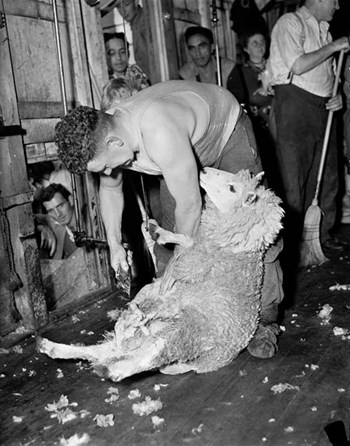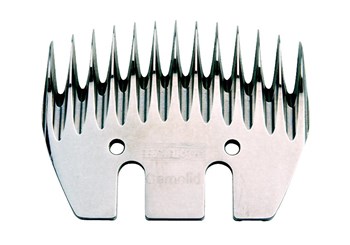Unknown
Wide-toothed shearing comb
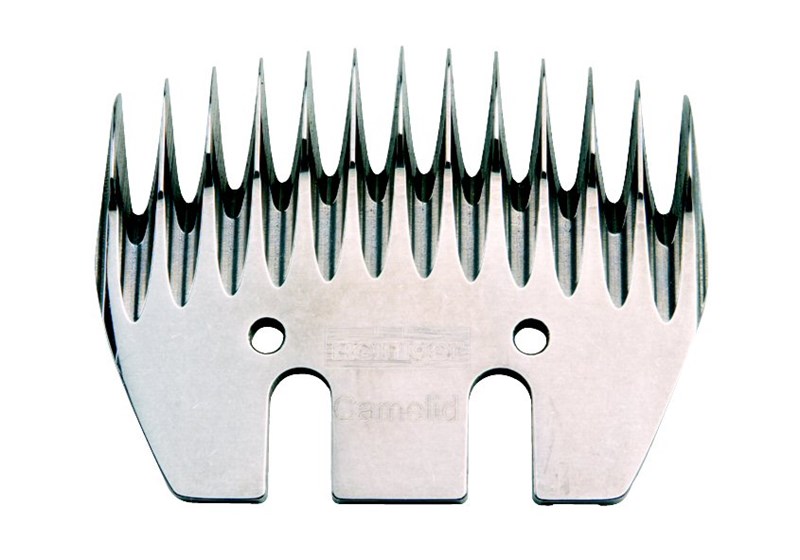
New Zealand and Australia both have a strong tradition of sheep-shearing that is part of the defining mythology of our two countries. Shearing heroes on both sides of the Tasman have been among the greatest heroes of all. New Zealand’s Godfrey Bowen (b. 1922, d. 1994) broke shearing records all over the world in the 1950s and became an international celebrity – as big a legend as Hillary. Bowen once sheared 456 ewes in nine hours (just over one minute per sheep!). He pioneered the technique, still used today, of stretching the skin on the sheep with the non-shearing hand in order to get a more even fleece. Bowen was so huge the Soviet Union honoured him as a friend of the proletariat worker. A British newspaper once compared Bowen’s shearing with the ‘grace’ of Nureyev’s dancing – such was the importance of sheep-shearing in that era. The reason we labour this point is so that your postmillennial mind can comprehend the following drama.
For in that same decade a controversy brewed that drove a wedge between our two countries in a way that has only been rivalled by a comparatively trivial underarm bowling incident.
It all began in 1898 with the development in Australia of the Wolseley shearing machine. A few years later the machine was good enough to replace hand shears in sheds all over both countries. In the beginning both countries used a simple 10-tooth comb. Twenty years later and New Zealanders were using a 13-tooth comb from the UK. It suited our conditions and although it was not taken up by Australian shearers, this was not the 13-tooth comb that caused the controversy – it was another Kiwi innovation.
In the early 1950s a new kind of comb was invented in New Zealand. The ‘concave’ comb was a 13-tooth comb, with some of the outside teeth bent slightly inwards. At first only one tooth was bent (now three or four teeth form the concavity), but this slight modification was a breakthrough in shearing efficiency.
Whereas in the early days of shearing, Australians came to New Zealand in droves, adding an ‘o’ to the end of every word – giving us ‘sheepos’ who kept the pens full and ‘fleecos’ who gathered the shorn wool – in the 1970s and 1980s New Zealanders began to go to Australia in search of work. Shearers were the foundation and the basis of the whole Australian union movement, which was gaining enormous power at this time. The shearing union was very conservative and the presence of New Zealand shearers was a big threat to the solidarity of the workers’ movement. New Zealand shearers were willing to work longer hours for less pay, in worse conditions. And they had a different kind of comb – a better one. With the concave comb Kiwi shearers could shear half as many sheep again in the same amount of time as their Aussie counterparts.
The whole Australian shearing rate was based on the old 10-toothed comb. The concave comb – called the ‘wide comb’ by the Australians – became the scapegoat for all the grievances Aussie shearers had against the New Zealand ‘scabs’ (or should that be ‘scabbos’?). New Zealand shearers’ willingness to work harder, combined with their new comb, meant they were an attractive proposition to Australian sheep-station bosses, who hired them to weaken the grip the unions were gaining. The concave comb was banned by the unions and there was a 10-week-long national strike by shearers in 1983.
When the furore died down, progress was the winner – finally the courts in Australia had to step in and allow the use of the wide comb. This genuine product of Kiwi genius is now the standard comb all over the world and the controversy is all but forgotten. Well, it’s at least as forgotten as the underarm bowling incident.
